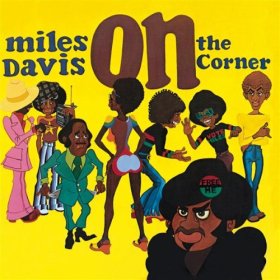
On the Corner is a studio album by American jazz trumpeter, bandleader, and composer Miles Davis. It was recorded in June and July 1972 and released on October 11 of the same year by Columbia Records. The album continued Davis's exploration of jazz fusion, and explicitly drew on the influence of funk musicians Sly Stone and James Brown, the experimental music of Karlheinz Stockhausen, ideas by composer Paul Buckmaster, and the free jazz of Ornette Coleman.

Thomas "Bones" Malone is an American jazz musician, arranger, and producer. As his nickname implies, he specializes on the trombone but he also plays saxophone, trumpet, tuba, flute, and bass guitar. He has been a member of The Blues Brothers, Saturday Night Live Band, Blood, Sweat & Tears, and the CBS Orchestra, the house band for the Late Show with David Letterman.

Airto Guimorvan Moreira is a Brazilian jazz drummer and percussionist. He is married to jazz singer Flora Purim, and their daughter Diana Moreira is also a singer. Coming to prominence in the late 1960s as a member of the Brazilian ensemble Quarteto Novo, he moved to the United States and worked in jazz fusion with Miles Davis and Return to Forever.
Reginald Grant Lucas was an American guitarist, songwriter and record producer. Lucas is perhaps best known for producing the majority of Madonna's 1983 self-titled debut album, and for playing rhythm guitar with the Miles Davis electric band during the first half of the 1970s.

Agharta is a 1975 live double album by American jazz trumpeter, composer, and bandleader Miles Davis. By the time he recorded the album, Davis was 48 years old and had alienated many in the jazz community while attracting younger rock audiences with his radical electric fusion music. After experimenting with different line-ups, he established a stable live band in 1973 and toured constantly for the next two years, despite physical pain from worsening health and emotional instability brought on by substance abuse. During a three-week tour of Japan in 1975, the trumpeter performed two concerts at the Festival Hall in Osaka on February 1; the afternoon show produced Agharta and the evening show was released as Pangaea the following year.

Pangaea is a live album by American jazz trumpeter, composer, and bandleader Miles Davis. It was originally released as a double album in 1976 by CBS Sony in Japan.

East Meets West is the debut album by American jazz guitarist John Scofield. It was recorded in 1977 at the Onkio Haus in Tokyo with bassist Clint Houston and Motohiko Hino on drums. The opening tracks of either side of the LP include trumpeter Terumasa Hino, the drummer's brother.

Masabumi Kikuchi was a Japanese jazz pianist and composer known for his unique playing style. He worked with many diverse musicians, including Sonny Rollins, Miles Davis, McCoy Tyner, Elvin Jones, Gary Peacock and Paul Motian, and collaborated with Gil Evans and Tōru Takemitsu.

Black Beauty: Miles Davis at Fillmore West is a live double album by American jazz trumpeter, composer, and bandleader Miles Davis. It was recorded on April 10, 1970, at the Fillmore West in San Francisco, shortly after the release of the trumpeter's Bitches Brew album and the recording of Jack Johnson (1971). Black Beauty was produced by Teo Macero, Davis' longtime record producer.
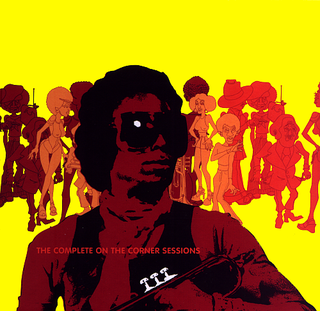
The Complete On the Corner Sessions is a posthumous box set by American jazz musician Miles Davis, released in the US on September 25, 2007, by Columbia Records and in the UK on September 29 on Legacy Recordings. Like other Davis box sets, the included material is taken from a wider chronology of sessions than the dates which actually produced the titular album. The Complete On the Corner Sessions compiles material from 1972 through 1975 which, due to lineup changes Davis made throughout the era, features over two dozen musicians.
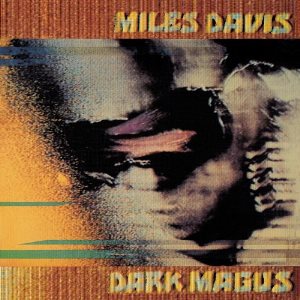
Dark Magus is a live double album by American jazz trumpeter, composer, and bandleader Miles Davis. It was recorded on March 30, 1974, at Carnegie Hall in New York City, during the electric period in the musician's career. Davis' group at the time of the concert included bassist Michael Henderson, drummer Al Foster, percussionist Mtume, saxophonist Dave Liebman, and guitarists Pete Cosey and Reggie Lucas. He also used the show to audition saxophonist Azar Lawrence and guitarist Dominique Gaumont. Dark Magus was produced by Teo Macero and featured four two-part recordings with titles from the Swahili words for the numbers one through four.
Terumasa Hino is a Japanese jazz trumpeter. He is considered one of Japan's finest jazz musicians. His instruments include the trumpet, cornet, and flügelhorn.
William Earl Kilson is an American jazz drummer.
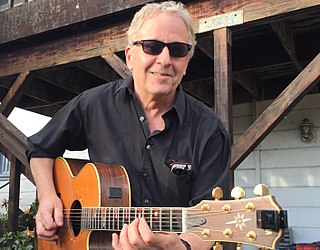
Michael Barry Finnerty is an American jazz guitarist, keyboardist, singer, songwriter, and arranger, known for his work as a touring and recording session musician for Miles Davis, The Crusaders, the Brecker Brothers, Hubert Laws, and Ray Barretto. Finnerty is the author of books on music improvisation and a semi-autobiographical novel.
Sam Morrison is an American jazz saxophonist, flutist, and composer, who replaced Sonny Fortune in Miles Davis's band in 1975. Davis supposedly said, "I haven't heard that much fire on the saxophone since 'Trane was in my band". He is of partly Ukrainian heritage, two of his grandparents having originated in Pereiaslav, near Kyiv.

Miles Davis at Newport 1955–1975: The Bootleg Series Vol. 4 is a four-CD album compiling five of Miles Davis's performances at the Newport Jazz Festival in Newport, Rhode Island and two European concerts branded under the Festival moniker with one additional track recorded in New York City.
Masahiko Togashi was a Japanese jazz percussionist and composer.
Nobuyoshi Ino is a Japanese jazz double-bassist.
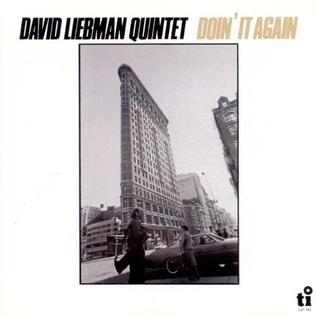
Doin' It Again is an album by saxophonist David Liebman which was recorded in Brooklyn in 1979 and released on the Dutch Timeless label.
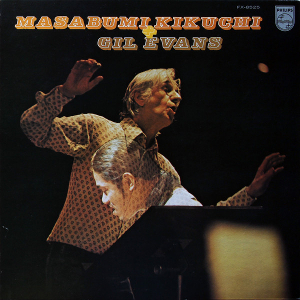
Masabumi Kikuchi with Gil Evans is a studio album led by jazz pianist and composer Masabumi Kikuchi with support of Gil Evans, recorded during Gil's first visitation to Japan in 1972. CD version was released from EmArcy label in 1989 with additional three tracks.














